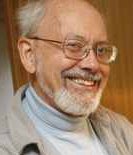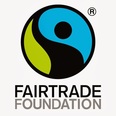
I had never been to the Holy Land, and would not want to go as a tourist. But when Cliff College advertised a study trip to Israel/Palestine, I was hooked. This was a degree module that could stand alone involving some study and a short dissertation. (At my age it’s a good way of keeping my brain active! I am now writing my dissertation on what the words of Jesus in Luke’s gospel say to contemporary politics in Israel/Palestine.)
So in July a party of 15, including Ian White and Stephen Skuce as leaders, spent 11 days there, staying in convents on the Via Dolorosa in Jerusalem’s Arab Quarter and in the centre of Nazareth. We also stayed one night in Bethlehem in the Occupied West Bank, in the homes of Palestinian Christians.
Our first destination in Jerusalem was the national museum at David’s Citadel, to gain a historical context. We also visited the Christian holy sites, the Temple Mount (Muslim) and Wailing Wall (Jewish) and also the National Holocaust Museum at Yad Vashem. We avoided using local tour guides because all, of whatever religion, are trained and employed by the Israeli government. Ian has visited Israel/Palestine many times over 20 years and was a very capable independent guide. Each evening we had a seminar usually led by Stephen, but with input from a variety of local people – the Orders of nuns, and other people with experience to share.
During our transfer to Nazareth we had an hour sailing on the Sea of Galilee. We prayed, and I sang “O Sabbath rest by Galilee . . .”. But in contrast, we did see evidence of the “apartheid” policies towards Palestinians. A Palestinian Christian told us that, despite their inferior status there, the West Bank is a safer place for Christians to live than any Arab country, especially Syria. A Palestinian citizen of Israel, whose father was born in Palestine before 1948, said: “Who am I? born in Israel; I’m a Palestinian. I’m an Arab, so a second-class Israeli; and I’m a Christian. He showed us how his people, while Israeli citizens, are discriminated against, but are still far better off than Palestinians living in the Occupied Palestinian Territories – Gaza and the West Bank.
While in the West Bank we saw how building the Wall was taking increasing amounts of what is believed to be Palestinian land, for new townships with Jewish settlers. In Bethlehem the Wall penetrates the city. On the Palestinian side artistic graffiti is reminiscent of equivalent walls in Berlin or Belfast.
Ian arranged for us to meet significant people he knows who are making a mark with their work. From Amoun Sleem we discovered how the Domari – a local equivalent of travellers – are despised and marginalised by both Jews and Arabs. In Bethlehem Suzanne escorted us round the business she has set up: the Bethlehem Fair Trade Artisans. In one of our evening seminars Paul Clark told us of his voluntary work with EAPPI (The World Council of Churches Ecumenical Accompaniment Programme in Palestine and Israel). While there, the team of 20 (on a 3 month tour) act as independent observers in hot spots in Jerusalem, the West Bank and Gaza. Although strictly neutral, they are feared and hated by the public authorities.
Before leaving for home we were given detailed instructions on how to pack, as random security checks are expected at the airport. In particular, we had to leave behind any evidence that we had stayed in the West Bank!
I want to express my grateful thanks to the circuit for the grant towards this study trip. Although each circuit minister has a training fund for such study as this, there is no such fund for supernumerary ministers.
Richard Thompson
So in July a party of 15, including Ian White and Stephen Skuce as leaders, spent 11 days there, staying in convents on the Via Dolorosa in Jerusalem’s Arab Quarter and in the centre of Nazareth. We also stayed one night in Bethlehem in the Occupied West Bank, in the homes of Palestinian Christians.
Our first destination in Jerusalem was the national museum at David’s Citadel, to gain a historical context. We also visited the Christian holy sites, the Temple Mount (Muslim) and Wailing Wall (Jewish) and also the National Holocaust Museum at Yad Vashem. We avoided using local tour guides because all, of whatever religion, are trained and employed by the Israeli government. Ian has visited Israel/Palestine many times over 20 years and was a very capable independent guide. Each evening we had a seminar usually led by Stephen, but with input from a variety of local people – the Orders of nuns, and other people with experience to share.
During our transfer to Nazareth we had an hour sailing on the Sea of Galilee. We prayed, and I sang “O Sabbath rest by Galilee . . .”. But in contrast, we did see evidence of the “apartheid” policies towards Palestinians. A Palestinian Christian told us that, despite their inferior status there, the West Bank is a safer place for Christians to live than any Arab country, especially Syria. A Palestinian citizen of Israel, whose father was born in Palestine before 1948, said: “Who am I? born in Israel; I’m a Palestinian. I’m an Arab, so a second-class Israeli; and I’m a Christian. He showed us how his people, while Israeli citizens, are discriminated against, but are still far better off than Palestinians living in the Occupied Palestinian Territories – Gaza and the West Bank.
While in the West Bank we saw how building the Wall was taking increasing amounts of what is believed to be Palestinian land, for new townships with Jewish settlers. In Bethlehem the Wall penetrates the city. On the Palestinian side artistic graffiti is reminiscent of equivalent walls in Berlin or Belfast.
Ian arranged for us to meet significant people he knows who are making a mark with their work. From Amoun Sleem we discovered how the Domari – a local equivalent of travellers – are despised and marginalised by both Jews and Arabs. In Bethlehem Suzanne escorted us round the business she has set up: the Bethlehem Fair Trade Artisans. In one of our evening seminars Paul Clark told us of his voluntary work with EAPPI (The World Council of Churches Ecumenical Accompaniment Programme in Palestine and Israel). While there, the team of 20 (on a 3 month tour) act as independent observers in hot spots in Jerusalem, the West Bank and Gaza. Although strictly neutral, they are feared and hated by the public authorities.
Before leaving for home we were given detailed instructions on how to pack, as random security checks are expected at the airport. In particular, we had to leave behind any evidence that we had stayed in the West Bank!
I want to express my grateful thanks to the circuit for the grant towards this study trip. Although each circuit minister has a training fund for such study as this, there is no such fund for supernumerary ministers.
Richard Thompson

